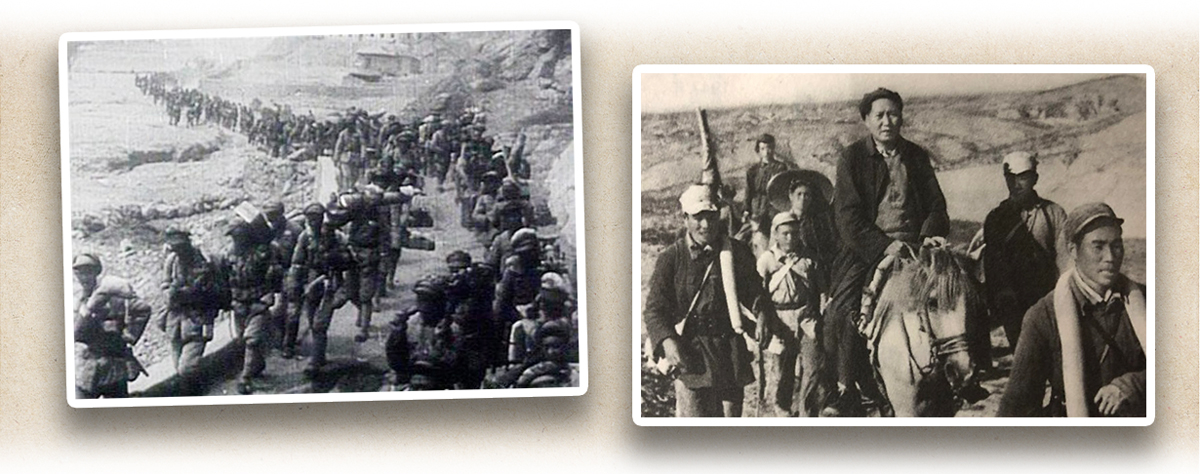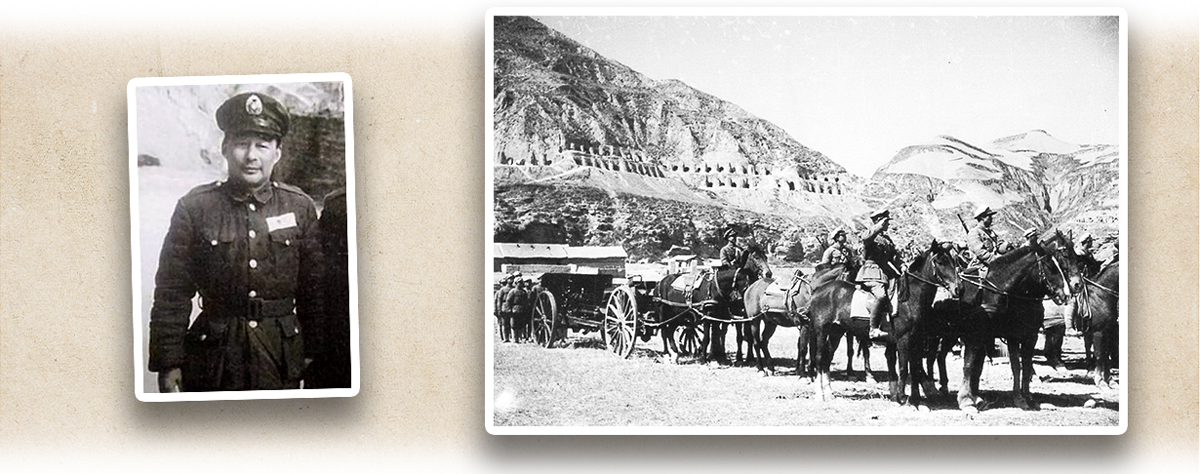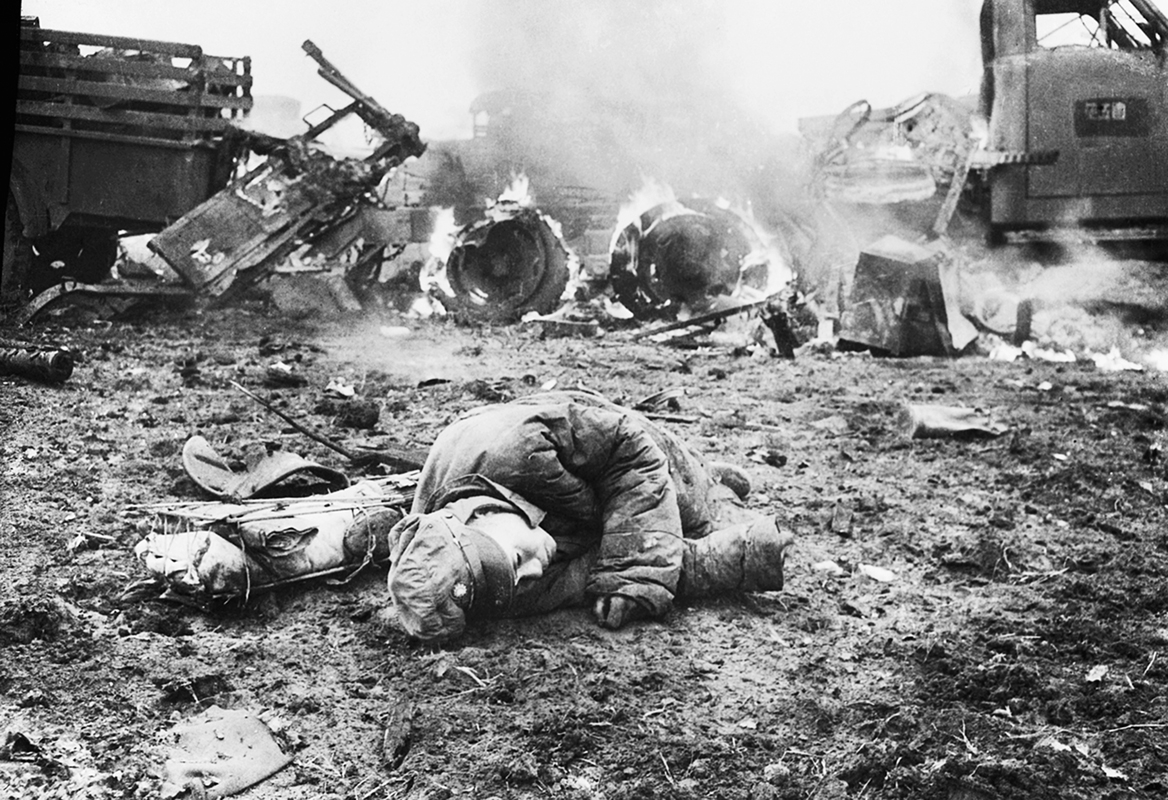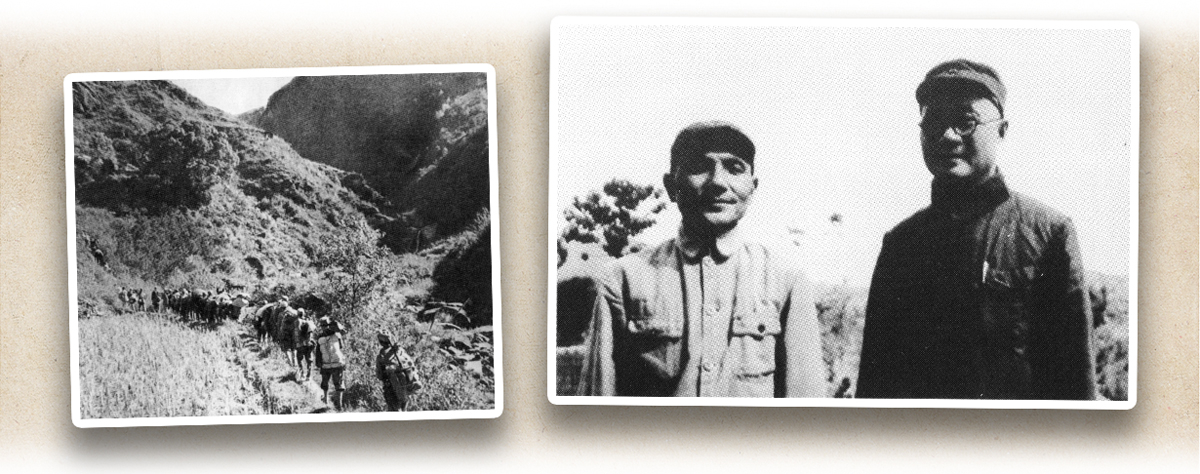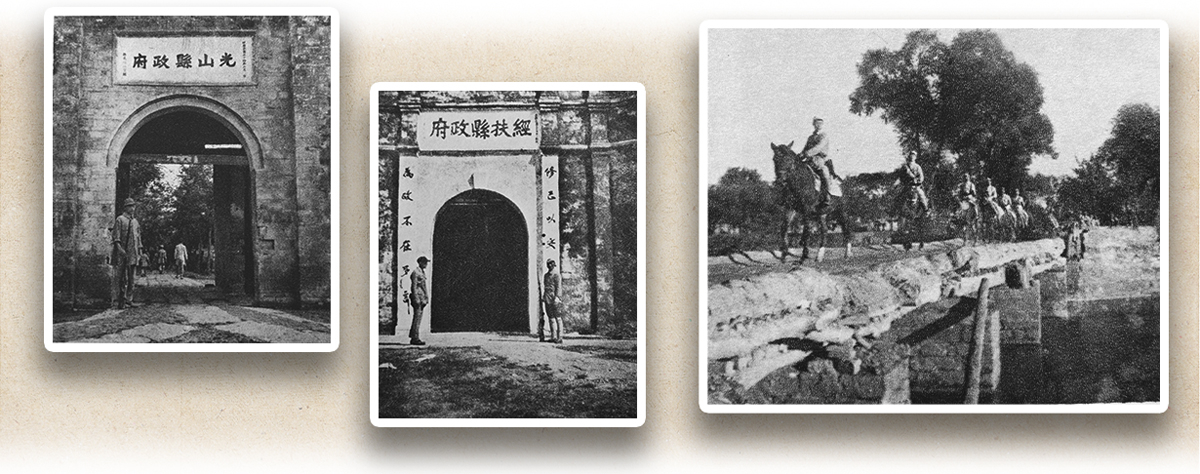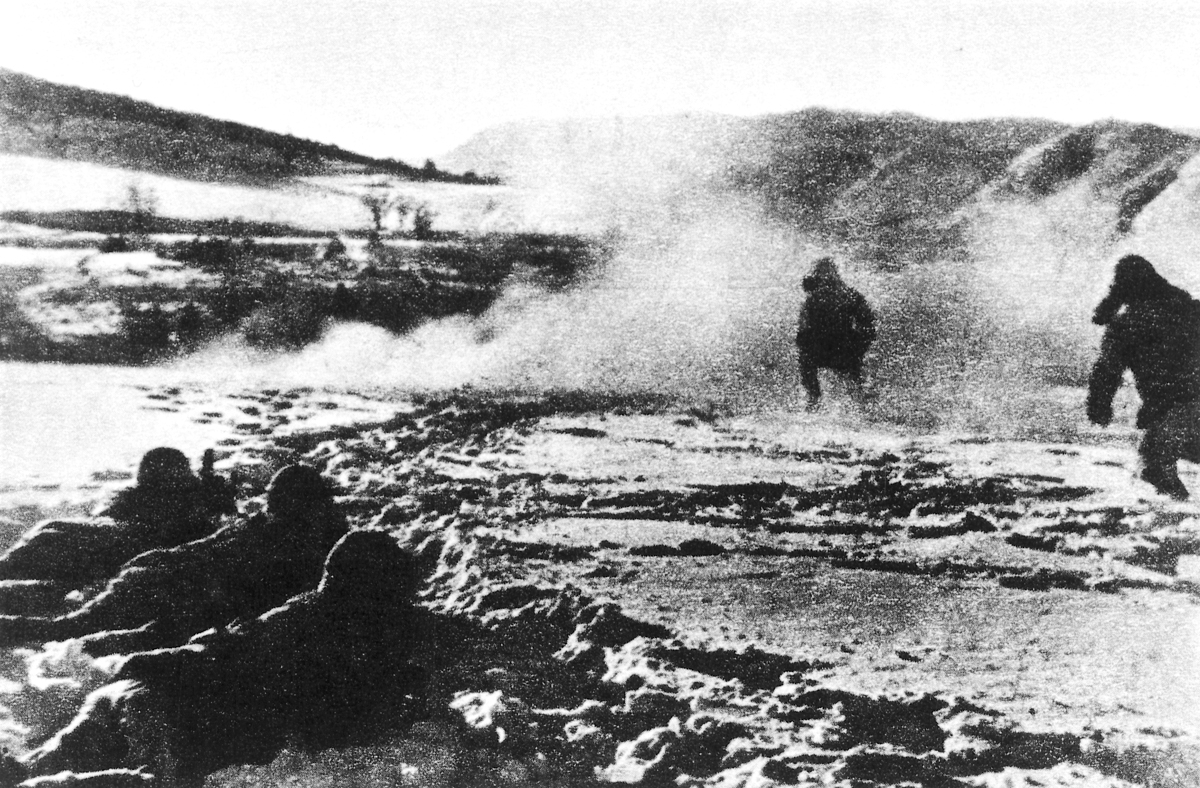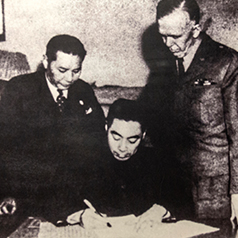The Kuomintang of China’s (KMT, 中國國民黨) National Revolutionary Army (NRA) had 4.3 million soldiers at the start of the full-scale civil war while the Chinese Communist Party’s (CCP, 中國共產黨) military had around 1.2 million (including the main force and the militias). The NRA’s initial total offensive strategy was supported by its strong forces and more advanced armaments. It marched towards the CCP’s bases in East, North, Northeast, and Northwest China, which the CCP referred to as the Liberated Zones. Instead of holding onto city and land, the People’s Liberation Army (PLA) of the CCP massed its better-equipped troops to annihilate the NRA’s effective strength in mobile warfare. After eight months of fighting, the NRA suffered serious losses. It thus changed its strategy to targeted offensive and started advancing on north Shaanxi (陝西) and Shandong (山東) in March 1947. Under the command of Hu Zongnan (胡宗南), the NRA even entered the seat of the CCP Central Committee in Yan’an (延安). However, the CCP leaders including Mao Zedong (毛澤東), Zhou Enlai (周恩來), and Ren Bishi (任弼時) had already transferred to north Shaanxi under the guard of Peng Dehuai’s (彭德懷) division.
Since 1947 summer, the PLA started gaining the upper hand. It wiped out 1.1 million NRA troops, while its own forces grew to 2 million. As a result, Chiang Kai-shek (蔣介石) had to change the NRA’s strategy from total defence to targeted defence. On 10 October 1947, the CCP Central Committee released the Outline of Chinese Land Law to rally farmers to join and support its military. On the same day, the PLA Commander-in-Chief Zhu De (朱德) and Deputy Commander-in-Chief Peng Dehuai jointly announced the Manifesto of the Chinese People’s Liberation Army which raised the slogan “Overthrow Chiang Kai-shek and liberate all China!” In late 1948, the civil war came to its finale.
|
|
In 1934, the NRA breached the CCP Central Committee’s central base Ruijin (瑞金), forcing the commencement of the Red Army’s Long March. By the time it reached north Shaanxi, only 30,000 were left. In 1947, the CCP’s base in Yan’an was also seized by the NRA, but by then, the CCP grew stronger. How did the two sides’ strategies change over time? |
|
|
See answer below. |
Left: Lin Biao (林彪) and his associates commanding the CCP troops to fight the NRA in May 1946. Right: the NRA occupying Sipingjie (四平街). The NRA’s early advantage in the civil war was evident on the battlefields in Northeast China. The NRA won two battles at Sipingjie in April and May 1946 and June 1947.
The NRA General Sun Liren (孫立人, the figure with arms akimbo) inspecting the fortifications in Changchun (長春) in 1947. It was the time when the Nationalist Government controlled major cities including Shenyang (瀋陽) and Changchun in the Northeast. Sun showed his brilliance commanding the Chinese Army in India during the War of Resistance Against Japanese Aggression and he also contributed to the NRA’s success in the Northeast at the start of the civil war.
Photos taken in March 1947. Left: the NRA’s troops under Hu Zongnan’s command marching towards Yan’an, the base of the CCP Central Committee. Right: Mao Zedong and other CCP core members retreating from Yan’an before the NRA’s invasion.
Photos taken in April 1947. Left: Hu Zongnan in Yan’an after the NRA seized this CCP’s base. Right: the NRA holding a military parade at Yan’an Airport to celebrate its victory. Although the NRA took Yan’an, the CCP’s command structure remained intact.
An NRA fallen on the battlefield of Shandong in early 1947. Despite its advantages at the start of the civil war, the NRA’s losses were huge. As its occupation expanded, its forces were thinned out and unable to tackle the PLA. By contrast, the PLA employed the strategy of mobile warfare. It would sacrifice occupied territories for mobility and flexibility because its main objective was to debilitate the enemy. The PLA augmented and strengthened itself amid the fights with the NRA. The tide turned in the latter half of 1947.
Standing on the tri-border provincial areas of Hubei (湖北), Henan (河南), and Anhui (安徽), the Dabie Mountains (大別山) was of great strategic importance. From the end of June to the end of August 1947, the PLA’s Shanxi-Hebei-Shandong-Henan Field Army (晉冀魯豫野戰軍) reached the Dabie Mountains after a long march. Their arrival significantly augmented the CCP’s forces in the Central Plains Region and changed the course of the war. Left: in August 1947, the Shanxi-Hebei-Shandong-Henan Field Army reaching the Dabie Mountains. Right: the commanders of the Shanxi-Hebei-Shandong-Henan Field Army Liu Bocheng (劉伯承, right) and Deng Xiaoping (鄧小平, left). The Army was also known as the Liu-Deng Army.
The PLA accelerated its capture of the Central Plains Region including Henan from August 1947. From left to right: the PLA occupying Guangshan County (光山縣), Henan, on 17 August, Jingfu County (經扶縣), Henan, on 28 August, and reaching the plains in Henan, Anhui, and Jiangsu Province (江蘇) in October.
In November 1947, the PLA attacked the stronghold of Shijiazhuang (石家莊), Hebei Province (河北). The photos show the PLA crossing the NRA’s defensive line in Shijiazhuang, and Jin-Ji-Cha Daily’s (《晉冀察日報》) extra on the PLA’s capture of Shijiazhuang.
From December 1947 to March 1948, the CCP launched the Winter Offensive in Northeast China. The photo shows the PLA infantry charging at the base of the KMT forces under the cover of its artillery fire. The offensive ended in a heavy defeat for the KMT, completely changing the status of the two parties in the Northeast.
Left: street fighting during the Linfen Campaign (臨汾戰役) in Shanxi Province (山西) between March and May 1948, which ended in another loss for the KMT. Right: in October 1948, the CCP released an illustrative map on the circulation of currency in the Liberated Zones in the North, East, and Northwest China. It showed the expansion and integration of CCP-controlled areas in North China. As the balance of power reversed, the Chinese Civil War entered its last chapter in the latter half of 1948.
|
|
In 1934, the NRA breached the CCP Central Committee’s central base Ruijin, forcing the commencement of the Red Army’s Long March. By the time it reached north Shaanxi, only 30,000 were left. In 1947, the CCP’s base in Yan’an was also seized by the NRA, but by then, the CCP grew stronger. How did the two sides’ strategies change over time? |
|
|
In 1934, the KMT launched the Fifth Encirclement and Extermination Campaign against the CCP’s Central Revolutionary Base. One million NRA soldiers and the blockhouse tactic were employed. The CCP Central Committee, following leftism proposed by Wang Ming (王明), Bo Gu (博古), and the Comintern adviser Otto Braun, adopted a positional warfare strategy and was severely beaten. Consequently, the CCP embarked on a strategic retreat. The CCP’s strength greatly improved by 1947. Following the strategy proposed by Mao Zedong, the CCP mobilised its high-quality forces to engage in mobile warfare that effectively struck enemies. The strategy prioritised the destruction of the NRA’s effective strength over the defence of occupied areas, which successfully turned the tide. The NRA was thrilled when capturing Yan’an, but was soon dismayed by the knowledge of the CCP’s transfer. For some time, the NRA lost track of the CCP forces and gradually exhausted itself. |
Source of most photos used in this feature piece: Fotoe.




